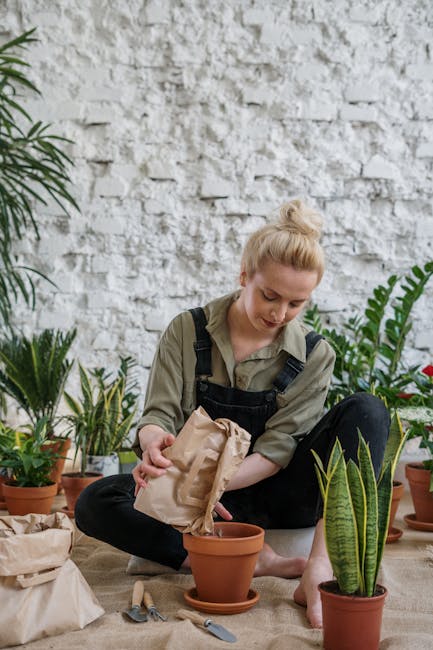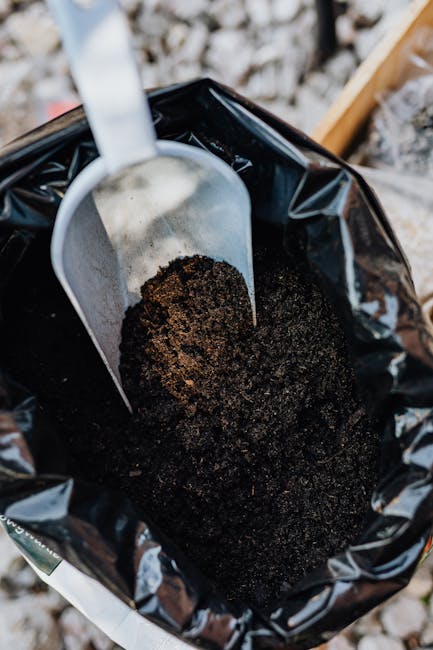Understanding the Needs of Aroids
Aroids, a diverse family of plants encompassing popular houseplants like monsteras, philodendrons, pothos, and anthuriums, share a common need: well-draining yet moisture-retentive soil. Their native environments, often featuring warm, humid conditions and varying levels of soil moisture, dictate their specific soil requirements. A poorly chosen soil mix can lead to root rot, a common and fatal problem for aroids, while a poorly draining mix can lead to other issues. This guide delves into creating the perfect aroid soil mix, exploring different components and their functions, and offering troubleshooting tips for common problems.
The Importance of Well-Draining Soil
Aroids, unlike many other plants, are prone to root rot if their roots sit in consistently soggy soil. Their roots require adequate aeration to thrive, and standing water suffocates them, leading to decay and ultimately plant death. A well-draining soil mix ensures that excess water can easily escape, preventing the buildup of moisture around the roots.
Key Components of an Ideal Aroid Soil Mix
A successful aroid soil mix typically combines several ingredients, each serving a crucial purpose. The ratio of these ingredients can vary depending on the specific aroid species and growing conditions, but a good starting point is a blend emphasizing aeration and moisture retention.
1. Peat Moss: The Moisture Retention Champion
Peat moss, a naturally occurring material, is excellent at retaining moisture. It holds water effectively while also offering good aeration, provided it’s not compacted. However, it’s crucial to consider its environmental impact and explore sustainable alternatives like coco coir.

2. Perlite: The Aeration Expert
Perlite is a volcanic glass that expands when heated, creating a lightweight, porous material. Its primary function is to improve drainage and aeration, preventing the soil from becoming waterlogged. Adding perlite ensures that air can reach the roots, promoting healthy growth.

3. Orchid Bark: For Added Drainage and Structure
Orchid bark, particularly the finer grades, contributes to excellent drainage and provides a structural element to the soil mix. It’s particularly beneficial for aroids that prefer slightly more airy conditions. The coarser pieces can offer superior aeration and drainage, especially for larger, established plants.
4. Coco Coir: A Sustainable Alternative to Peat Moss
Coco coir, derived from coconut husks, is a sustainable and increasingly popular alternative to peat moss. It offers good moisture retention and aeration, making it a suitable component in aroid soil mixes. It also tends to be less acidic than peat moss, which can be beneficial for certain aroids.
5. Vermiculite: Improving Drainage and Water Retention
Vermiculite, a mineral that expands when heated, offers a combination of improved drainage and water retention capabilities. It also contributes to better soil structure and can help with nutrient retention.
6. Charcoal: Enhancing Drainage and Preventing Rot
Adding small pieces of horticultural charcoal can improve drainage and help prevent the build-up of harmful bacteria and fungi. This is especially useful for preventing root rot, a common problem for aroids.
Crafting Your Perfect Aroid Soil Mix: Recipes and Variations
There’s no one-size-fits-all recipe for aroid soil. The ideal mix depends on factors like the specific plant species, pot size, and growing conditions. Below are a few example recipes to get you started:
Recipe 1: The Basic Aroid Mix
- 2 parts peat moss (or coco coir)
- 1 part perlite
- 1 part orchid bark (fine grade)
This recipe provides a good balance of moisture retention and aeration, suitable for many common aroids.
Recipe 2: For Aroids Preferring More Aeration
- 1 part peat moss (or coco coir)
- 1 part perlite
- 1 part orchid bark (medium grade)
- 1/2 part vermiculite
This mix is ideal for aroids with larger root systems or those that prefer drier conditions between waterings.
Recipe 3: A Sustainable and Eco-Friendly Option
- 2 parts coco coir
- 1 part perlite
- 1 part composted wood chips
This recipe uses sustainable alternatives to peat moss, resulting in an environmentally friendly soil mix.
Troubleshooting Common Problems
Even with the perfect soil mix, problems can still arise. Here’s how to address some common issues:
Root Rot: Identifying and Preventing
Root rot, manifested by mushy, dark roots and wilting foliage, is often caused by overwatering or poorly draining soil. Remove affected roots, repot in fresh, well-draining soil, and adjust watering habits.

Yellowing Leaves: A Sign of Nutrient Deficiency or Overwatering
Yellowing leaves can indicate a nutrient deficiency or overwatering. Test the soil pH and consider using a balanced fertilizer. Adjust watering frequency to avoid overly wet soil.
Wilting Leaves: Indicative of Underwatering or Poor Drainage
Wilting leaves might point to underwatering or poor soil drainage. Check the soil moisture and adjust your watering schedule. If drainage is an issue, repotting into a more suitable mix is necessary.
Choosing the Right Pot for Your Aroids
The choice of pot significantly impacts soil drainage and moisture retention. Terracotta pots are porous, allowing for better air circulation and evaporation, while plastic pots retain moisture longer. Consider the porosity of the pot when selecting a soil mix; more porous pots may require a mix that retains moisture better.
Conclusion: Cultivating Success with the Perfect Aroid Soil
Creating the perfect aroid soil mix is a vital step in cultivating healthy, thriving plants. By understanding the needs of your specific aroids and carefully selecting the right components, you can provide an ideal growing environment that promotes robust growth and minimizes the risk of common problems. Remember to always monitor your plants, adjust your techniques as needed, and enjoy the beauty of your flourishing aroid collection.

